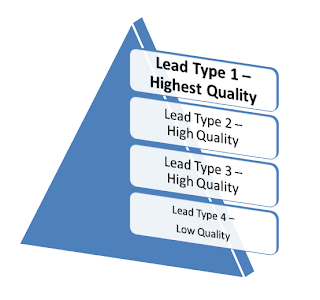 Having experienced four CEO "universes" within the last six months, I couldn't resist but to compare different CEO styles and their impacts on employees.
Having experienced four CEO "universes" within the last six months, I couldn't resist but to compare different CEO styles and their impacts on employees.
The CEO impact doesn't
stop with the employees though! It extends further, shaping how companies deal
with their customers, partners, and other parties.
This seems to be a
pretty hot topic for quite a few people, at least in Silicon Valley. After
numerous conversations on this very subject, I decided to write this blog,
attempting to break down some key CEO characteristics and their impacts.
Industry Experience and Vision. One of the most important CEO assets is an
in-depth understanding
of the industry. This is especially critical for small- and medium-sized
companies. Industry experience allows a CEO to avoid extremely costly strategic
mistakes.
The CEO with a strategic
vision grounded in industry knowledge can unify and energize his or her employees and
quickly earn their confidence and respect.
"Professional” CEOs
often lack an understanding of and passion for the industry. They substitute this
for "professionalism" and a consultative approach, which inevitably completely de-energizes companies and can drive them into irrelevance
or extinction.
A somewhat viable alternative is having a co-founder or a product executive that is knowledgeable AND passionate about the space. But the CEO has to be able to own and publicly convey the vision and the strategy.
Huge corporations with multiple unrelated product lines are clearly an exception to this principle.
One of the most fatal flaws of a CEO is lack of transparency with executive staff and the rest of the company. This results in employees second-guessing the CEO's intentions as well as their colleagues' relationships and intentions with the CEO.
It breeds mistrust and
creates uncertainty at all levels, and it creates unnecessary politics in the
executive ranks, which translates into poison for the rest of the company. If
untreated, it often becomes a cancer that slowly eats away at the company. The
valuable energy is spent inwards instead of outwards.
Open communications by
the CEO, on the other hand, encourage executives to emulate the style and makes
the company a better place to work in. It translates into honest and consistent
external communications, turning the company into a trustworthy partner, for
both partners and customers.
Actions vs. Words. Some CEOs use actions; some use words.
Obviously, it is easier to come up with words. Words like "vision and
mission" seem to be favorites with CEOs with management consultant
backgrounds. Word-driven CEOs can even convince and temporarily energize
companies by using just words.
However, the
inconsistency between their words and actions eventually catches up with them and
disillusions their employees. It sends a message that double standards are OK
and that promises can be broken.
This disconnect affects
external communications, leading to lost sales, lost customers, and brand
damage.
Micromanagement and No-management. Micromanagement is my pet peeve. It sends a message to employees that they are not trusted. It breeds fear and kills innovation, and most talented employees end up leaving and growth stalls.
The other extreme is
lack of control and accountability, which encourages random or no decisions and
breeds politics.
There is a golden middle
that I have learned from an executive I worked for early in my career: hire the
right people and provide them with the freedom to innovate, but have a clearly
defined system of accountability, execution, and metrics.
As a side note, one of
the micromanagement (and manipulative) techniques that grates on me is the assigning of ambitious (yet meaningless)
tasks with aggressive deadlines that get everybody so wrapped up in them and stressed that they have no time to question the
direction and see the bigger picture.
Crisis Management. Crises happen. They are a reality of life in any
company. A crisis can be either external or internal. It can be a result of be
a competitive move, a product failure, a lawsuit, dealing with the board or
investors, employee issues, or so much more.
The way in which a CEO handles these issues sends a message to the rest of the company and industry. Does the CEO panic or become aggressive or play the blame game? Or does the CEO handle the crisis calmly and rationally? Other factors that count when handling a crisis include speed, confidence level, decisiveness, and communications.
The way in which a CEO handles these issues sends a message to the rest of the company and industry. Does the CEO panic or become aggressive or play the blame game? Or does the CEO handle the crisis calmly and rationally? Other factors that count when handling a crisis include speed, confidence level, decisiveness, and communications.
Inexperience and lack of
confidence in dealing with crises can very quickly turn disastrous both for
employee morale and the company brand.
The Kitchen Sink. Then there are obvious virtues that some CEOs
bring to the table, such as honesty, fairness, truthfulness, and transparency,
and their counterparts: dishonesty, cheating, lying, and manipulation. But
these, and many more, are too obvious to write about.
What are your favorite
CEO assets
and pet peeves?


















.jpg)


.jpeg)